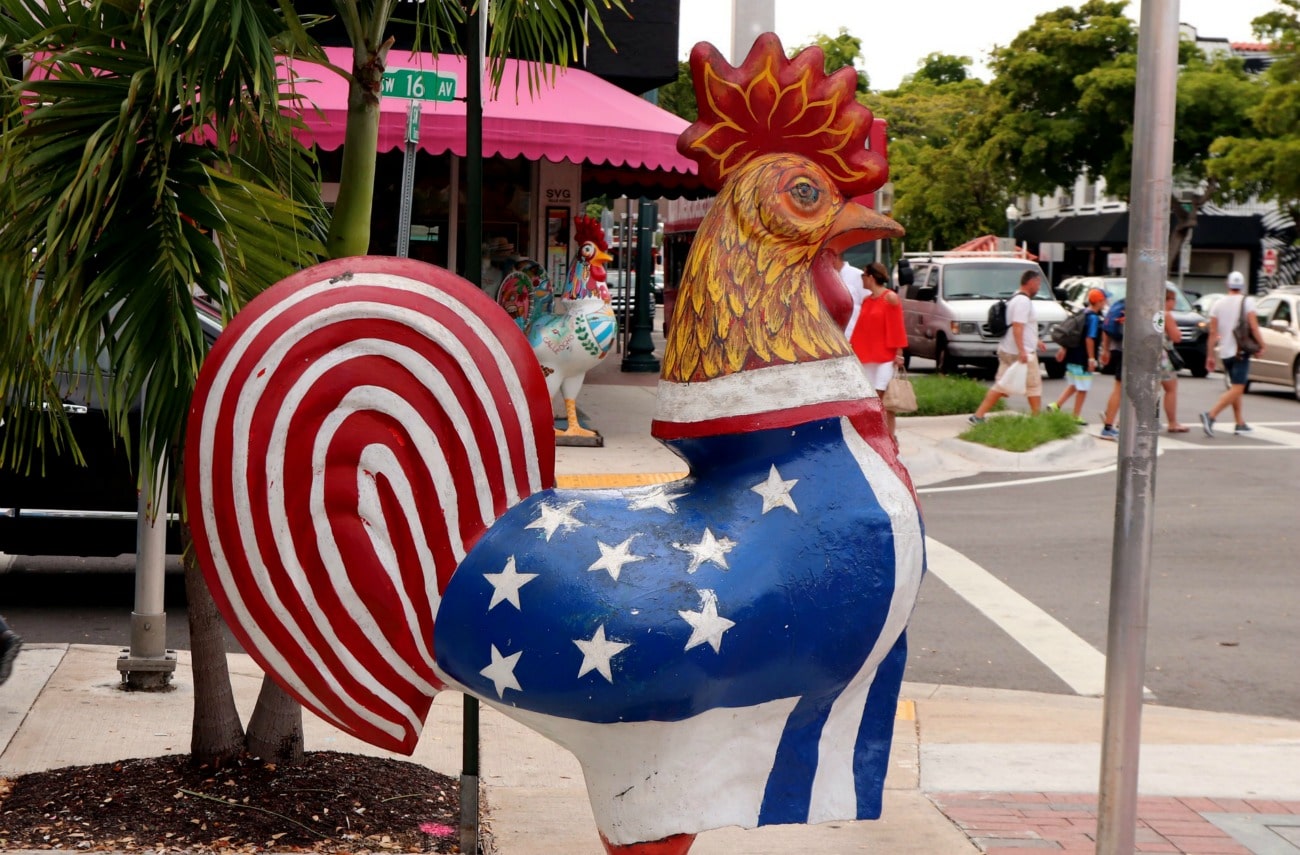On any given day, the scent of hand rolled Cuban cigars and strong coffee fills the air of the streets of Little Havana. Located just minutes from the gleaming high rises and international banking center of downtown Miami and the Brickell Corridor, this humble yet vibrant neighborhood is home to Cuban refugees who settled here after Fidel Castro won the Cuban Revolution in 1959. Five decades later, a visit here offers what you might expect to see in Havana. Larger than life colorful roosters – part of traditional Cuban folklore – adorn the sidewalks, “ventinitas”, or cafeteria coffee windows serve as outdoor communal meeting spots, corner fruit carts sell cold coconut juice to passersby, and the random tunes of Salsa and Afro-Caribbean Soca music lend to impromptu dancing in the street as Hop On Hop Off busses bring tourists in by the droves.
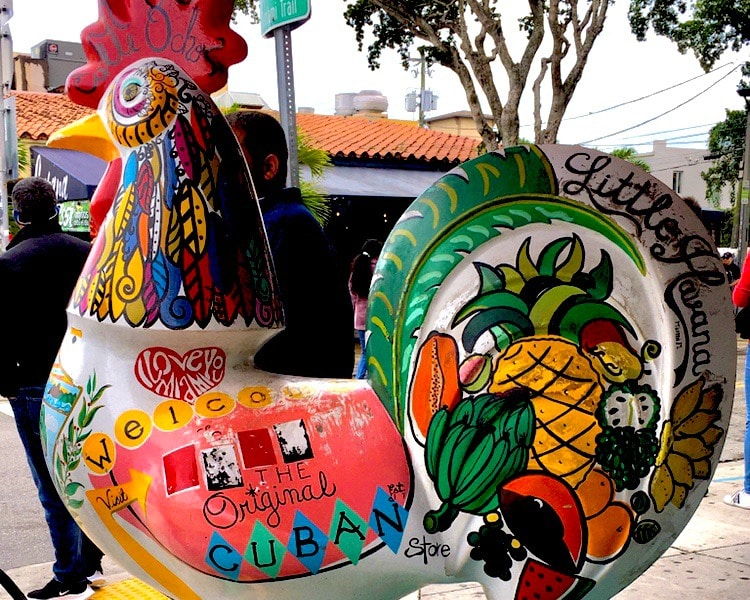
Cuban Cigars
Up and down 8th Street, or Calle Ocho as the locals call it, cigar shop signs read “hecho a mano,” or handmade. Large bundles of dried tobacco leaves hang overhead, and master cigar rollers sit behind glass storefronts giving visitors the view of what many came for – hand rolled Cuban cigars. For cigar aficionados, this is cigar central. Not only can you watch them being made right in front of you, but you can buy and enjoy a cigar with a glass of wine or Cuban coffee at an in house cigar bar.
While at Havana Classic Cigars, I asked how long it takes to make one cigar. “Three minutes,” I’m told. But I’m quickly informed three minutes is to roll the cigar. The process of making a cigar takes days, months really, if you consider the drying of the leaves. This process, they say, is what sets Cuban cigars apart from all the rest.
In the back of the shop, past locally made Cuban art, our tour guide explains a little more about Cuban culture and Cuban cigars. “Cubans in Cuba typically make a state salary of $20 which is not enough to buy one Cuban cigar”, he says. He also reminds us that these cigars, or any others in Little Havana, aren’t “real Cuban cigars”. Sure, they’re rolled by 100% Cuban Master Cigar Makers who are as physically close to Cuba as they can get without being there, but unlike everywhere else in the world – you can’t legally buy Cuban cigars in the US.
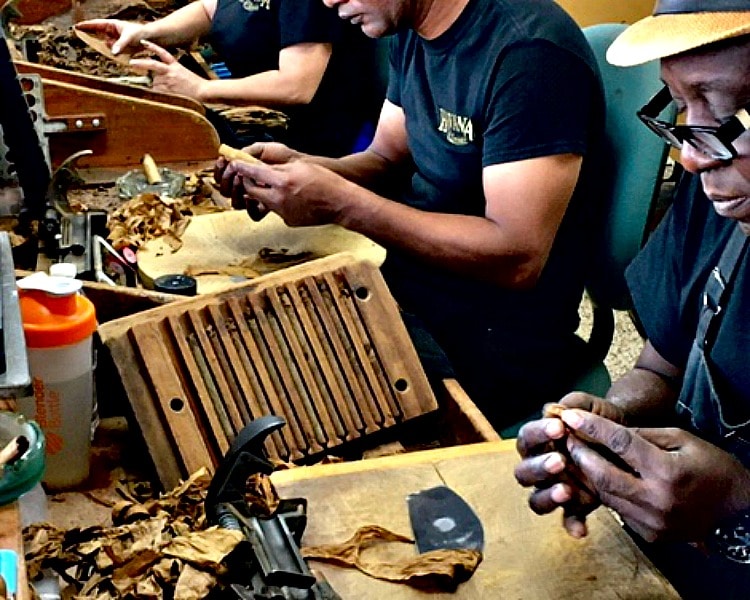
Cuban Coffee
Prior to 1959, Cuba’s coffee culture and café scene flourished. Vividly painted buildings with ornate embellishment housed over 150 coffee shops that well-to-do Cubans would frequent. But after the revolution, with the US trade embargo and the collapse of the Soviet Union, Cuba’s coffee culture rapidly declined. Coffee rations began in 1962, allowing each person four ounces per month. To stretch it, Cubans often cut coffee with garbanzo beans, lentils, and peas, and served it in tiny cups.
Little Havana is a great place for an immersive Cuban coffee experience. If you haven’t had Cuban coffee, it’s basically sweet espresso, made with Cuban grown coffee and demerara sugar – the brown sugar you see in packets sometimes called turbinado. One method is to add sugar during the brewing process. Another is to add the sugar directly into the espresso shot. Before you walk up to a coffee shop window on the streets of Little Havana, there are a few things you need to know. To start, it’s not just a plain coffee. There are variations: Café Cubano, Cortadito, Café con Leche and Colada.
For the ultimate ventinita experience, and to make friends in the process, order the Colada. Served in a Styrofoam cup along with a handful of shot glass sized cups, coladas are meant for sharing.
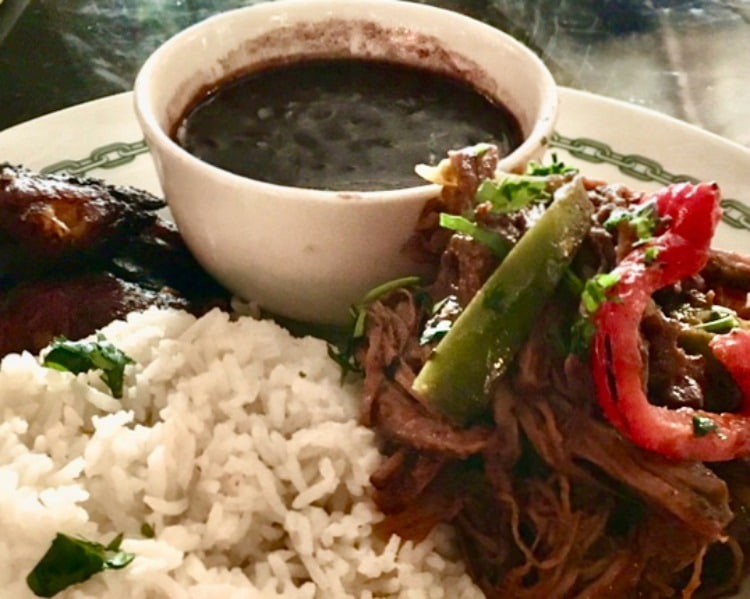
Cuban Food
From an ice cream parlor with a chocolate and cayenne pepper flavor named “Burn in Hell Fidel”, to fruit markets serving fresh sugar cane juice, snack stands offering guava pastries, and full-service restaurants, you can’t get a more authentic Cuban food experience than in Little Havana.
After walking Calle Ocho for the better part of the afternoon, it was a treat to sit inside Ball and Chain, an iconic club that dates to the 1930s. The interior has been restored to its original style and features dark green stucco walls and a high vaulted pine ceiling with rattan fans. The place is decorated with vintage ads announcing live music performances, and there’s a back-room bar with a stage and a private patio outside. That the club has a storied past and greats like Billie Holiday and Count Basie once played there makes it intriguing.
When it comes to Cuban food, rice and beans and sweet plantains are staples. If you’re not sure what to order, a quintessential dish to try might be Arroz con Pollo or Ropa Vieja. Think comfort food dishes made in crockpots. At Ball and Chain, a Mojito and live music complete the meal.
Another Cuban go to in Little Havana is Versailles. Often referred to as the “world’s most famous Cuban restaurant”, it’s a bit out of the heart of Calle Ocho. Anyone who loves the style of the 50s and 60s – vinyl seats, Formica tables, and grand chandeliers – will appreciate this traditional Cuban cafeteria style setting and the absolute time capsule that Versailles truly is.
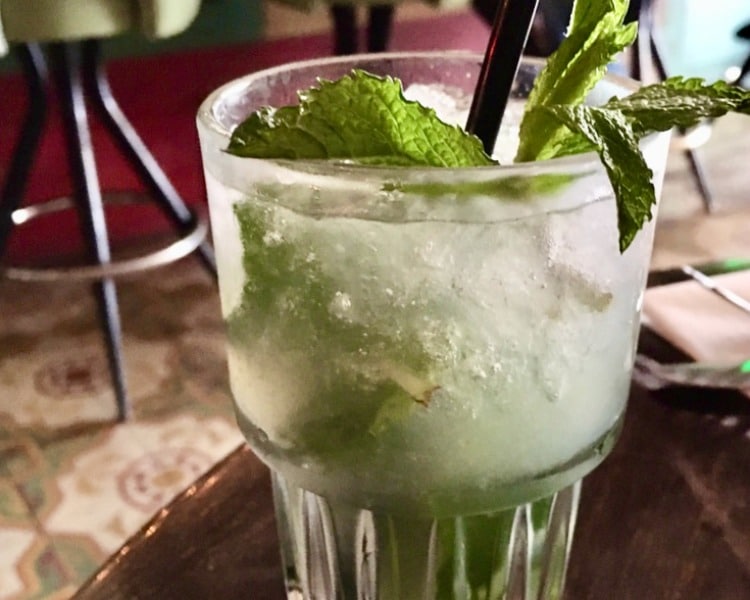
Domino Park
Located across from the Visitor’s Center, Domino Park (officially named Maximo Gomez Park, after a Cuban revolutionary hero) is the hub of the original residents of Little Havana. This tiny corner of land is surrounded by a white wall with a black metal gate which houses a covered pavilion. On any given day you can find seniors congregating to discuss politics and social issues around a game of Dominos. The park is maintained by the Parks and Recreation Department of the City of Miami, and the hours of operation and rules are posted in Spanish only. But there’s no mistaking where you are and the authenticity of this little piece of green space.
Domino Park was my favorite part of Little Havana purely for the people watching. Even though there’s literally nothing to do there it made a lasting impression on me. Watching everyday Cuban life, the nuances of which the guidebooks don’t explain, got me thinking about something I’d heard from the co-owner of Ball and Chain regarding Little Havana, which seems ripe for gentrification. He said, “The amenity of the area is the people. Without them this is Epcot.”
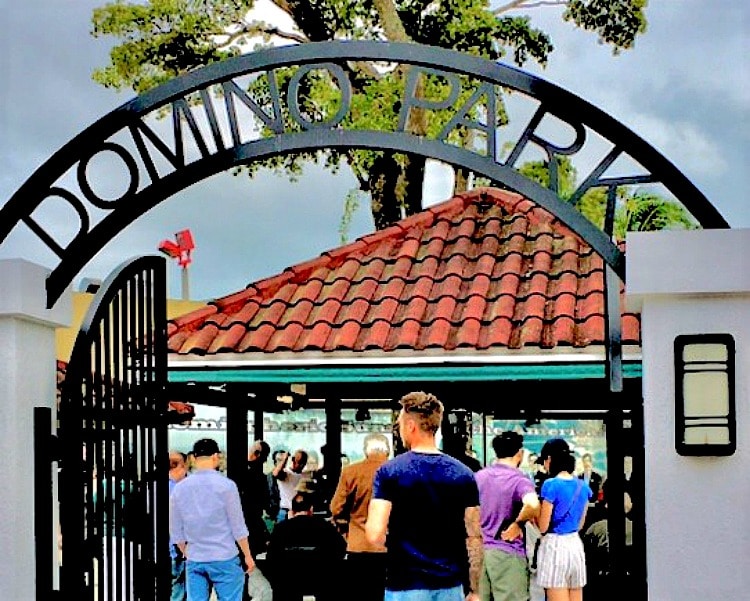
The area code for Miami is 305.
Where to Eat
Versailles – Iconic Cuban cafeteria, bakery, and coffee shop from 1971 serving authentic Cuban food at fair prices. 3355 SW 8th Street, Miami, 305-444-0240; www.versaillesrestaurant.com
Ball and Chain – Restaurant and music hall in the heart of Little Havana. 513 SW 8th Street, Miami, 305-643-7820; www.ballandchainmiami.com
Los Piñarenos, Fruteria – Neighborhood fruit market since the 1960s selling fresh sugar cane juice and smoothies made from exotic fruits. 1334 SW 8th Street, Miami, 305-285-1135
What to See & Do
Miami Culinary Tours – Taste Cuban food and learn about Cuban culture on a 2.5-hour walking tour. 1652 SW 8th Street, Miami, 786-942-8856; www.miamiculinarytours.com
Futurama 1637 Art Building – Created as a workshop and gallery to showcase artists’ works. 1637 SW 8th Street, Miami, 305-643-5500; www.futurama1637.homestead.com
Little Havana Cigar Factory – Miami’s oldest cigar factory. Like stepping into a 1950s Havana cigar club. Shop, drink and smoke, of course. 1501 SW 8th Street, Miami, 305-541-1103; www.littlehavanacigarstore.com

